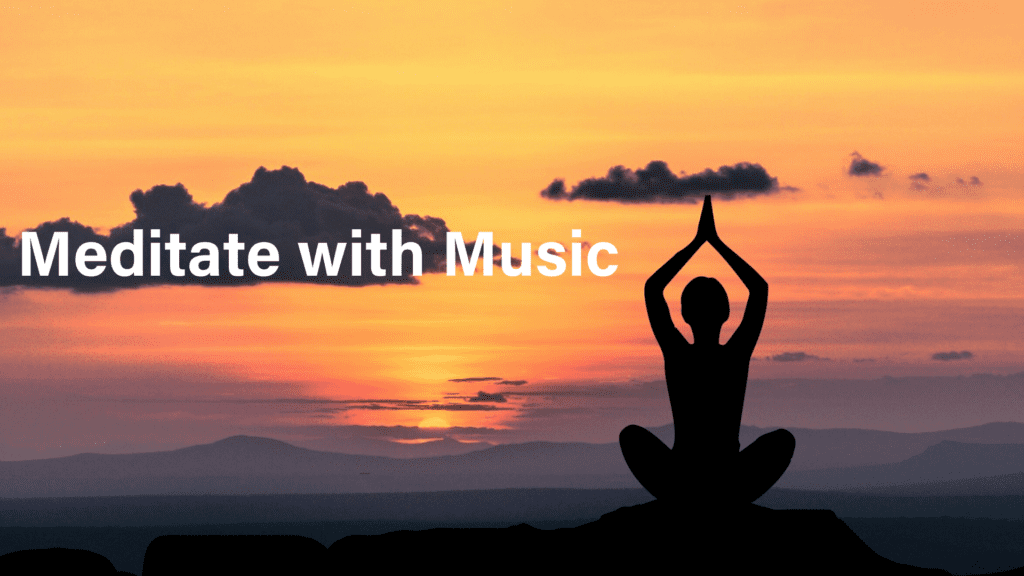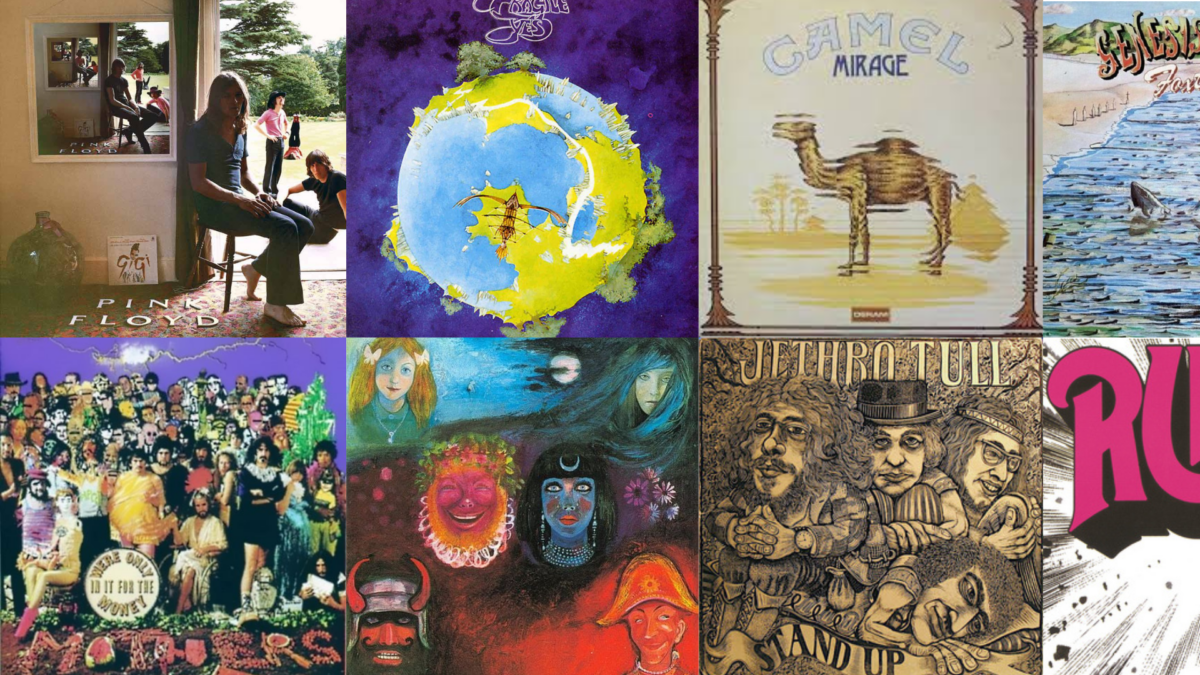
Meditation music as a genre is designed to promote relaxation, concentration, and tranquility, and has gained significant popularity in recent years. This genre, often characterized by its slow tempo, minimalistic composition, and use of natural sounds, serves as a tool to facilitate a deeper state of relaxation and concentration.
It is often used with mindfulness practices, yoga, meditation, and other holistic therapies. This article delves into the origins, how to meditate, characteristics, and benefits of meditative music, providing a comprehensive overview of this unique musical genre.
Origins of Meditative Music
Meditative music can be traced back to ancient times when music was used in religious and spiritual rituals to induce trance states or facilitate connection with the divine. Ancient cultures, including those in India, China, and Greece, recognized the therapeutic potential of music. In particular, Indian classical music has a rich tradition of ‘ragas,’ which are musical frameworks believed to evoke specific emotions or states of mind.
In more recent years, the advent of ambient music in the 20th century, pioneered by artists like Brian Eno, paved the way for the development of modern meditative music. This genre emphasizes tone and atmosphere over traditional structure, making it an ideal backdrop for relaxation.
Different Types of Meditation Music
Ambient Music
Ambient sounds, characterized by its atmospheric, enveloping soundscapes, is a popular choice for meditation. Its minimalistic composition, often devoid of lyrics, is designed to foster a sense of calm and tranquillity. The slow tempo and subtle harmonic changes allow listeners to drift into a meditative state without being distracted by sudden shifts in rhythm or melody. Artists like Brian Eno, known for his ambient works, can provide a serene backdrop to your meditation sessions.
Nature Sounds
The soothing sounds of nature, such as rain, ocean waves, or a babbling brook, can be incredibly calming and grounding. These natural symphonies help create a peaceful environment conducive to meditation. They can also help facilitate mindfulness by encouraging listeners to visualize the natural scenes the sounds represent, promoting a deeper connection with the natural world.
Meditation Music: Binaural Beats
Binaural beats are a form of soundwave therapy that involves listening to different sound frequencies in each ear. The brain processes these two frequencies to create a single, perceived tone that can help induce states of relaxation, focus, or creativity. Many people find binaural beats beneficial for meditation as they can help guide the brain into the desired state of consciousness.
Chanting and Mantras
Chanting and mantras, often used in practices like Kundalini Yoga and Transcendental Meditation, can also be used as meditating sound. The repetitive nature of chants and mantras helps to focus the mind, reducing distraction and promoting a deeper state of meditation. Examples include the well-known “Om” chant or the “Gayatri Mantra.”
Classical Music
Classical sounds, particularly pieces with a slow tempo and soft dynamics, can be very effective for meditation. The structured nature of classical music can provide a sense of calm and order, helping to quiet the mind. Compositions by artists like Bach, Mozart, or Debussy can offer a serene soundscape for meditation.
Meditation Music: Tibetan Singing Bowls
Tibetan Singing Bowls produce sounds that are believed to promote relaxation and healing. The bowls emit rich, deep tones and overtones that can create a sense of inner peace and tranquility, making them a popular choice for meditation and sound therapy.
New Age Music
New Age Music is a genre specifically designed to create a peaceful, relaxing atmosphere. Often incorporating elements of ambient sound, nature sounds, and traditional Eastern instruments, New Age Music can provide a soothing backdrop for reflection.
Key Factors & Differences of Meditation Music
Meditation music for anxiety is specifically curated to help ease feelings of stress and worry. The soothing tones can help to slow down racing thoughts, making it easier to focus on the present moment and cultivate a sense of calm.
Meditation music relaxation refers to tracks designed to help listeners unwind, often featuring slow tempos, soft instruments, and natural sounds. This type of music is perfect for reducing stress levels and promoting a state of tranquility.
Music for sleep meditation and meditation music for sleep are similar in purpose. They are composed to encourage deep, restful sleep. Slow, gentle melodies and soft rhythms help to quiet the mind, making it easier to drift off into a peaceful slumber.
Calm meditation music, as the name suggests, is designed to create a serene and peaceful environment. It often incorporates sounds from nature such as rain, waves, or birdsong, which are known to have a calming effect.
Christian meditation music combines spiritual elements with calming sounds to aid in prayer or contemplation. It often includes instrumental versions of hymns or original compositions that inspire a sense of peace and connection with the divine.
Tibetan meditation music typically encompasses traditional Tibetan instruments like singing bowls, bells, and gongs. This music is believed to promote healing and mindfulness.
Other Important Factors
Many platforms offer meditation music for free, including YouTube music meditation. These platforms are accessible to anyone with an internet connection, making it easy to find the perfect track for any meditation session.
Astral travel meditation music is designed to assist listeners in achieving an out-of-body experience, a phenomenon often associated with deep meditative states. It uses specific frequencies and tones to stimulate the brain and facilitate astral projection.
Deep sleep meditation music is designed to not only help listeners fall asleep but also to promote a deeper, more restful sleep. It often uses binaural beats or delta wave frequencies known to enhance the quality of sleep.
Meditation music & relax is a common phrase used to describe tracks that are designed to aid in relaxation and reflection. These tracks often feature soft melodies, natural sounds, and slow tempos.
Morning meditation music is specifically designed to help start the day on a positive note. It often features uplifting, gentle melodies that help to energize the listener and set a positive tone for the day.
Characteristics of Meditative Music
Meditative music encompasses a wide range of musical styles, but some common characteristics define the genre:
1. Slow Tempo: Meditative music typically features a slow tempo, which helps to slow down the listener’s heart rate and induce a state of relaxation.
2. Minimalistic Composition: This genre often uses simple, repetitive musical patterns. This minimalism helps to reduce mental clutter and promote focus.
3. Use of Natural Sounds: Many meditative tracks incorporate sounds from nature, such as waves, rain, or birdsong. These sounds have a calming effect and can help to ground the listener.
4. Absence of Lyrics: Most meditative music is instrumental or uses non-lexical vocables. This absence of lyrics helps to prevent the listener’s mind from getting caught up in a narrative, allowing for deeper introspection.
Types of Meditation Music
Sleep Meditation Music and Meditation Music for Sleep
Sleep meditation music is a subset that is particularly beneficial for those struggling with insomnia or restless nights. It’s designed to induce a state of relaxation and help listeners fall asleep more easily. Deep sleep music goes a step further, with frequencies intended to guide the brain into a deep sleep state. This type of music can be found on various platforms, including YouTube.
Meditation Music on YouTube
YouTube is a popular platform for finding a wide range of meditation music. It offers a plethora of options, from relaxing meditation music to deep sleep meditation music. Users can search for “meditation music YouTube” or “YouTube meditation music” to find channels dedicated to providing those music.
Meditation Music for Stress Relief
The chosen music for meditation should be calming and without lyrics, as words can distract the mind. This sound helps to create a tranquil environment conducive to meditation.
Meditation music relaxing music for stress is another popular category. This type of music is designed to reduce anxiety and promote relaxation, often featuring slow, soothing tunes and natural sounds like waves, rain, or forest sounds.
Other Types of Meditation Music
Free Meditation Music and Meditative Music
There are numerous resources available online that offer free meditation music. These include websites and apps, as well as platforms like YouTube. Meditative music is a broad term that encompasses all types of music used for meditation, including sleep meditation music, healing meditation music, and relaxing meditation music.
Healing Meditation Music
Healing meditation music is a type of meditation music believed to have therapeutic properties. It often includes frequencies that are said to stimulate healing, reduce anxiety, and promote overall well-being.
Meditation Music on YouTube
“YouTube meditation music” and “meditation music YouTube” are common search terms used by individuals looking for a wide array of options. YouTube offers an extensive library of meditating music, from calming tunes for relaxation to specific frequencies intended for deep sleep or healing.
Playing Meditation Music
To play meditation music, you can use a variety of platforms. These include music streaming services, meditation apps, and YouTube. Simply search for the type of meditation music you want, such as “deep sleep meditation music” or “healing meditation music”, and choose a track that appeals to you. When it comes to relaxation meditation could be just what the doctor ordered.
Meditate: Benefits of Meditative Music
The benefits of meditative music are wide-ranging and backed by an increasing body of scientific research:
Stress Reduction: The calming nature of music meditation can help to lower stress levels by slowing the heart rate, reducing blood pressure, and decreasing cortisol levels.
Improved Concentration: The repetitive patterns and minimalistic nature of meditative music can enhance focus and concentration, making it a popular tool for studying or working.
Enhanced Sleep Quality: Listening to meditative music before bed can help to improve sleep quality by promoting relaxation and making it easier to fall asleep.
Emotional Well-being: Meditative music can help to facilitate emotional release and healing, improving overall emotional well-being.
Spiritual Connection: For many, meditative music serves as a tool for spiritual connection and personal growth, helping to facilitate a deeper understanding of oneself and the universe.
How to Meditate with Music
Meditation is a time-honored practice that can reduce stress, increase calmness and clarity, and promote happiness. Adding music to the mix can enhance these benefits, providing a calming backdrop that can help your mind stay focused. Here’s how to incorporate music into your reflection routine.
Choosing the Right Music
The first step is selecting suitable music for reflection. It should be calming, slow-paced, and preferably without lyrics, which can be distracting. Genres like classical, ambient, or lo-fi are often good choices. Some people also prefer nature sounds, like the sound of rain or waves.
Setting the Scene
Before starting your meditation, ensure your environment is comfortable and free from distractions. You might want to dim the lights, light some candles, or use essential oils for a calming scent. Position your speakers or headphones so that the music is enveloping but not overpowering.
Beginning the Meditation
Start by taking a few deep breaths to center yourself. As you begin, focus on the music. Notice the different instruments, the melody, and the rhythm. Let the music wash over you, helping you to stay present.
Using Music to Anchor Your Focus
When you begin, it’s normal for the mind to wander. When this happens, gently bring your focus back to the music. This can be especially helpful for beginners, as the music provides a tangible focus point.
Ending the Meditation
As your meditation session draws to a close, gradually bring your awareness back to your surroundings. Take a moment to notice how you feel. You might feel more relaxed, clear-headed, or in tune with your emotions.
Closing Thoughts
Meditative music, with its roots in ancient spiritual practices and its modern-day applications in stress reduction and emotional well-being, offers a powerful tool for holistic health. Whether used as a background for meditation, yoga, study, or relaxation, this genre provides a versatile soundtrack for a mindful life.
As our understanding of the mind-body connection continues to evolve, it is likely that the role of meditative music in promoting mental and physical health will continue to be explored and appreciated.










